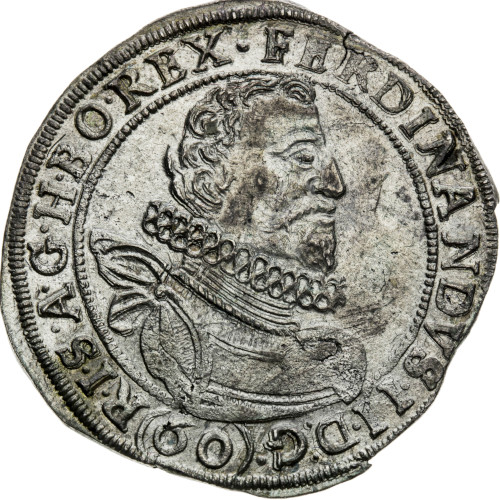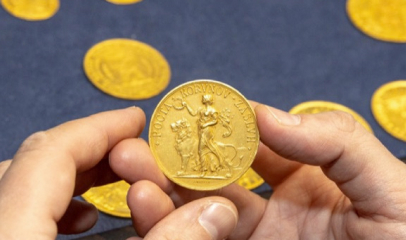
Changes in the functioning of the Czech mints
The estate uprising, launched in May 1618 by the Prague defenestration of the royal governors, brought a number of changes in the functioning of the Czech mints. Among other things, he pledged allegiance to the highest coin officials, who were still subject to the Czech Chamber. In the Kuttenberg Mint it concerned Mintmaster Šebestián Höltzl and in Joachimsthal’s Centuria Lengenfelder, who acquired the function of Mintmaster during Rudolph’s reign in 1606. In the Prague Mint, the Mintmaster’s Office was Beneš Hübmer, but only until the autumn of 1619. Pavel Škréta, a former Mint of Kutná Hora and one of the active participants in the estate uprising, the uncle of the future famous Czech painter Karel Škréta, applied for his place.
Joachimsthal mintmaster Centurio Lengenfelder
After the lost uprising, the attention of the new provincial governor, Karel of Liechtenstein, also focused, for obvious reasons, on the operation of the mints. Only Kuttenberg mintmaster Šebestián Höltzl was found to be loyal to the new power. Beneš Hübmer returned to the office of Prague Mintmaster at the instruction of Liechtenstein. As early as December 1620, Liechtenstein installed Kryštof Grad, the governor-in-chief of Joachimsthal, and commissioned him to prepare for the defense of an unprotected city against the invasion of enemy troops. At that time, there was a considerable supply of cash and unminted silver in the Joachimsthal Mint. Concerns therefore prevailed especially on the part of Mansfeld’s army, which held Pilsen and operated in the area of western Bohemia even after the defeat of the Estates Army. However, the normalization of the Joachimsthal conditions did not take place fast enough. The mood in Joachimsthal, closely tied to Protestant Saxony through personnel and business ties, was not in favor of the Catholic side, despite the replacement of the governor. Exactly the opposite. In January 1621, the Joachimsthal mintmaster Centurio Lengenfelder, accompanied by Joachimsthal city officials, voluntarily handed over cash worth 6,000 kopecks, ie 200 tolars, to Mansfeld in Loket from the mint. At the same time, the people of Joachimsthal abducted Governor Grad, housed Mansfeld’s troops in the town and prepared to defend the town against the imperial army.
Lengenfelder’s 60 Kreuzer 1621
However, the resistance of the Joachimsthal family did not last long. Mansfeld’s position in Pilsen became increasingly unsustainable. The final surrender of Joachimsthal by the imperial party can be connected with his surrender in March 1621. This also created the preconditions for stabilizing the conditions in the mint. The compromised Lengenfelder had to leave the position of Mintmaster, and after the temporary administration of David Enderlein, Řehoř Steinmüller was appointed the new Mintmaster in May 1621. It is not clear to what extent the Joachimsthal mint functioned in the first months of the turbulent year of 1621. It probably coined only to a limited extent, because mintings dated to 1621 with the mint mark of Centurio Lengenfelder can justifiably be considered very rare. These also include the beautiful 60 Kreuzer 1621 auctioned in Auction #27 under 144.





















